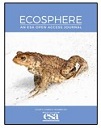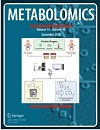Latest Publications
The influence of farm connectedness on foot-and-mouth disease outbreaks in livestock
 Jean B. Contina, Rachel L. Seibel, Bhim Chaulagain, Karasi B. Mills, Michael J. Tildesley, Christopher C. Mundt
Jean B. Contina, Rachel L. Seibel, Bhim Chaulagain, Karasi B. Mills, Michael J. Tildesley, Christopher C. Mundt
We applied a previously published livestock foot-and-mouth disease (FMD) model to estimate host connectivity using a transmission kernel based on contact tracing and measured subsequent to an animal movement ban in the 2001 United Kingdom epidemic. Connectivity within county-level farm landscapes were evaluated by considering the transmission kernel, host species composition, farm-level susceptibility, farm-level transmissibility, and distances between farms. Connectivity of the initially infected farm and mean connectivity among all farms in a county were strongly associated with effects of cull size, with disease control more effective at lower levels of farm connectivity. Host connectivity provides early information on the host-pathogen landscape and could be used as an assessment tool for predicting epidemic risks, as well as enabling preemptive control strategies to limit the size of disease outbreaks.
Regional scale diversity and distribution of soil inhabiting Tetracladium
 Anna Lazar, Robert I. Griffiths, Tim Goodall, Lisa R. Norton, Ryan M. Mushinski & Gary D. Bending
Anna Lazar, Robert I. Griffiths, Tim Goodall, Lisa R. Norton, Ryan M. Mushinski & Gary D. Bending
The genus Tetracladium has historically been regarded as an aquatic hyphomycete. However, sequencing of terrestrial ecosystems has shown that Tetracladium species might also be terrestrial soil and plant-inhabiting fungi. The diversity of Tetracladium species, their distribution across ecosystems, and the factors that shape community composition remain largely unknown. Using internal transcribed spacer (ITS) amplicon sequencing, we investigated the spatial distribution of Tetracladium in 970 soil samples representing the major ecosystems found across the British landscape. Overall, this study provides insights into the community composition patterns of Tetracladium in terrestrial ecosystems and highlights the importance of vegetation characteristics in shaping Tetracladium communities.
Balancing selfing and outcrossing : the genetics and cell biology of nematodes with three sexual morphs
 Adams, Sally, Tandonnet, Sophie and Pires-da Silva, André Francisco
Adams, Sally, Tandonnet, Sophie and Pires-da Silva, André Francisco
Trioecy, a rare reproductive system where hermaphrodites, females, and males coexist, is found in certain algae, plants, and animals. Though it has evolved independently multiple times, its rarity suggests it may be an unstable or transitory evolutionary strategy. In the well-studied Caenorhabditis elegans, attempts to engineer a trioecious strain have reverted to the hermaphrodite/male system, reinforcing this view. However, these studies did not consider the sex-determination systems of naturally stable trioecious species. The discovery of free-living nematodes of the Auanema genus, which have naturally stable trioecy, provides an opportunity to study these systems. In Auanema, females produce only oocytes, while hermaphrodites produce both oocytes and sperm for self-fertilization. Crosses between males and females primarily produce daughters (XX hermaphrodites and females), while male-hermaphrodite crosses result in sons only. These skewed sex ratios are due to X-chromosome drive during spermatogenesis, where males produce only X-bearing sperm through asymmetric cell division. The stability of trioecy in Auanema is influenced by maternal control over sex determination and environmental cues. These factors offer insights into the genetic and environmental dynamics that maintain trioecy, potentially explaining its evolutionary stability in certain species.
Speeding up Inference of Homologous Recombination in Bacteria
 Felipe J Medina-Aguayo, Xavier Didelot, Richard G Everitt
Felipe J Medina-Aguayo, Xavier Didelot, Richard G Everitt
Bacteria reproduce clonally but most species recombine frequently, so that the ancestral process is best captured using an ancestral recombination graph. This graph model is often too complex to be used in an inferential setup, but it can be approximated for example by the ClonalOrigin model. Inference in the ClonalOrigin model is performed via a Reversible-Jump Markov Chain Monte Carlo algorithm, however this often performs poorly due to the complexity of the target distribution since it needs to explore spaces of different dimensions. Recent developments in Bayesian computation methodology have provided ways to improve existing methods and code, but are not well-known outside the statistics community. We show how exploiting one of these new computational methods can lead to faster inference under the ClonalOrigin model.
Metabolic profiling and antibacterial activity of tree wood extracts obtained under variable extraction conditions
 Diana Vinchira-Villarraga, Sabrine Dhaouadi, Vanja Milenkovic, Jiaqi Wei, Emily R. Grace, Katherine G. Hinton, Amy J. Webster, Andrea Vadillo-Dieguez, Sophie E. Powell, Naina Korotania, Leonardo Castellanos, Freddy A. Ramos, Richard J. Harrison, Mojgan Rabiey & Robert W. Jackson
Diana Vinchira-Villarraga, Sabrine Dhaouadi, Vanja Milenkovic, Jiaqi Wei, Emily R. Grace, Katherine G. Hinton, Amy J. Webster, Andrea Vadillo-Dieguez, Sophie E. Powell, Naina Korotania, Leonardo Castellanos, Freddy A. Ramos, Richard J. Harrison, Mojgan Rabiey & Robert W. Jackson
This study aimed to develop a methodological approach to obtain extracts from different tree species with the highest reproducibility and chemical diversity possible, to ensure proper coverage of the trees’ metabolome. Each tree species has a unique metabolic profile, which means that no single protocol is universally effective. Extraction at 50 °C for three cycles using 80% methanol or chloroform/methanol/water showed the best results and is suggested for studying wood metabolome. These observations highlight the need to tailor extraction protocols to each tree species to ensure comprehensive metabolome coverage for metabolic profiling.
Delivery determinants of an Acinetobacter baumannii type VI secretion system bifunctional peptidoglycan hydrolase
 Valeriya Bezkorovayna, Brooke K. Hayes, Francesca N. Gillett, Amy Wright, David I. Roper, Marina Harper, Sheena McGowan, John D. Boyce
Valeriya Bezkorovayna, Brooke K. Hayes, Francesca N. Gillett, Amy Wright, David I. Roper, Marina Harper, Sheena McGowan, John D. Boyce
Acinetobacter baumannii is a Gram-negative opportunistic pathogen and is a common cause of nosocomial infections.). Here we define the regions of interaction between Tae17 and its cognate delivery protein VgrG17 and identify that amino acids G1069 and W1075 in VgrG17 are essential for Tae17 delivery via the T6SS, the first time such specific delivery determinants of T6SS cargo effectors have been defined. Furthermore, we determine that the Tae17 effector is a multidomain, bifunctional, peptidoglycan-degrading enzyme that has both amidase activity, which targets the sugar-peptide bonds, and lytic transglycosylase activity, which targets the peptidoglycan sugar backbone. Moreover, we show that the Tae17 transglycosylase activity is more important than amidase activity for the killing of Escherichia coli. This study provides molecular insight into how the T6SS allows A. baumannii strains to gain dominance in polymicrobial communities and thus improve their chances of survival and transmission.
